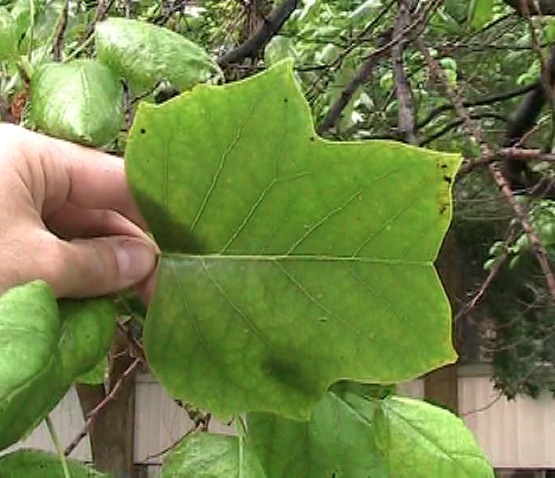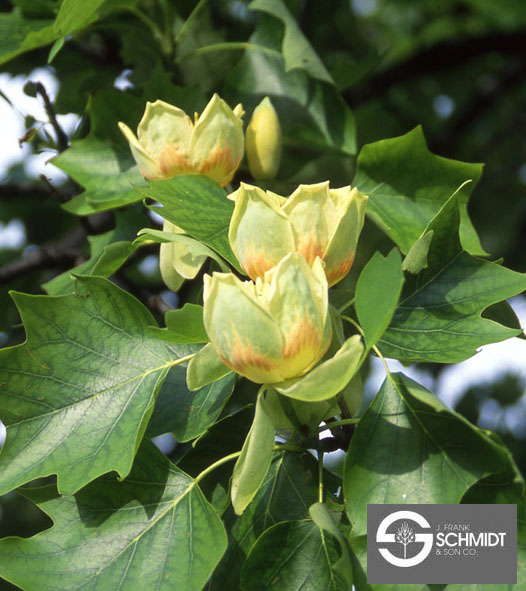| PSC 2620: Woody Trees and Shrub | Course Home | Week 10 |
Liriodendron tulipifera - Tuliptree or Yellowwood
Plant Viewer
 |
 |
| The shape of the leaf is quite unique, being perfectly mirrored along the central vein. There can be 6-8 lobes per leaf (they can be hard top decipher in the leaf because a pair are only slightly defined). | The flower is yellow or pale green and has a distinct tulip shape. |
 |
 |
| An aggregate seed cone forms during the summer and turns brown in the fall. Samaras will fall from the cone throughout winter. Image: Wikipedia.org | In fall the foliage turns an attractive yellow color. |
Plant Description
Liriodendron tulipifera, or Tuliptree, is a large shade tree, reaching 70-90 feet tall and 35-50 feet wide. It has a tall and upright form with a limited number of thick and large branches that give the tree a very strong skeletal appearance during the winter. It prefers a moist and slightly acidic soil, but will tolerate a wide range of soil and moisture conditions except for drought.
The leaf is unique shaped, nearly perfectly mirrored down the central vein of the leaf. The leaf has three to four squat lobes with understated points at the end of each lobe. The way the topmost two lobes are formed on the leaf creates an indented shape on the end of the leaf. The leaf is a true green color and turns yellow in the fall.
Semi-ornamental, 2-3 inch long flowers appear on the ends of the branches of the tree in the spring. The flowers have a cup-shape, like that of a tulip, and are a yellow-green color. The flowers are quite attractive but unfortunately, face upwards, making them much less ornamental than they could be. Cone-shaped aggregate seeds form in the summer and turn brown in the late fall. The cone is actually a collection of individual samaras seeds which fall throughout the winter.
Landscape Use
It is best used in large sites such as campuses and parks. Plant next to a multiple storied building where the occupants of the building can appreciate the upward-facing blooms.
Points of Interest
Tuliptree is particularly susceptible to aphids and scale. Aphids can be particularly troublesome, causing the leaves of the tree to become very sticky and irregularly glossy in appearance.